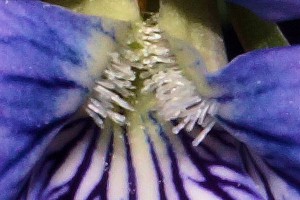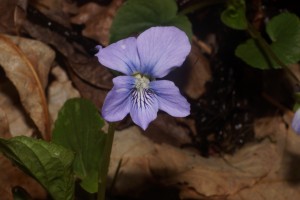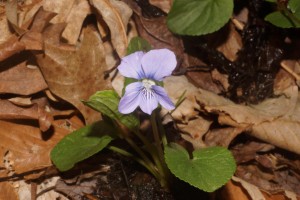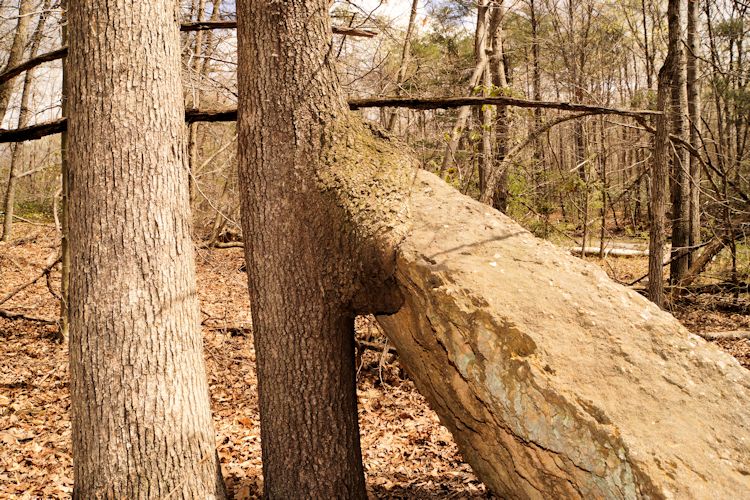 Today, I drove down Telegraph Road stopped by a swamp about a 1/2 mile south of Wildlife Loop. The swamp is called a Southern New England/Northern Piedmont Red Maple Seepage Swamp (USNVC: CEGL006406). In the swamp, I found a bunch of violets which turned out to be a Blue Marsh Violet (Viola cucullata Aiton).
Today, I drove down Telegraph Road stopped by a swamp about a 1/2 mile south of Wildlife Loop. The swamp is called a Southern New England/Northern Piedmont Red Maple Seepage Swamp (USNVC: CEGL006406). In the swamp, I found a bunch of violets which turned out to be a Blue Marsh Violet (Viola cucullata Aiton).
This violet’s most distinctive characteristic is the club-shaped (clavate) hairs on the lateral petals, which you can see in the photo here. It is native in North America from Minnesota to Ontario to Newfoundland on the north to Georgia in the South. It likes wet boggy soil just like where I found it on the refuge.
Violas can be divided into two different types, acaulescent and caulescent. In acaulescent species the flowers are born on a stem that rises directly from the root crown. In caulescent species, the flowers are born on a leafy stem. The Blue March Violet is an acaulescent species.
CITATIONS:
Brown, M.L. and R.G. Brown. 1984. Herbaceous Plants of Maryland. Port City Press, Baltimore, MD.
Gleason, H. A. and A. Cronquist. 1991. Manual of the Vascular Plants of Northeastern United States and Adjacent Canada. 2nd ed. New York Botanical Garden, NY.
McKinney, L.E. 1992. A taxonomic revision of the acaulescent blue violets (Viola) of North Am. Sida Botanical Miscellany, 7: 1–59
Nature Serve. Ecological Association Comprehensive Report – http://explorer.natureserve.org/servlet/NatureServe?searchCommunityUid=ELEMENT_GLOBAL.2.688675 Accessed 23 April 2015.
Nature Serve. Viola Cucullata Comprehensive Report. http://explorer.natureserve.org/servlet/NatureServe?searchName=Viola+cucullata Accessed 23 April 2015.
Weakley, A.S. 2014. Flora of the southern and mid-Atlantic states. University of North Carolina Herbarium, North Carolina Botanical Garden, University of North Carolina, Chapel Hill.



